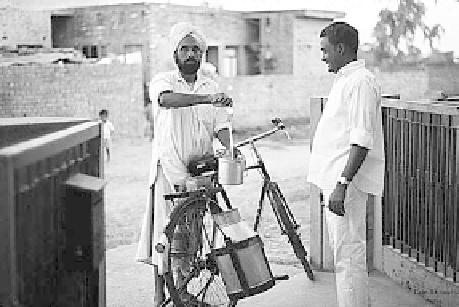Agriculture Reference
In-Depth Information
animals within 36 hours. Humans in contact with infected animals may be at risk of
infection through airborne virus particles. A vaccine is available for humans.
7.5.4 Marketing
The principal products of cattle and buffaloes are milk, meat, and leather. Milk and
meat are highly perishable products requiring special treatment to prevent spoilage.
Milk.
Milk is taken from cows and normally sold within 1 day in most tropical
villages. Typically it is the farmer or an intermediary who sells the milk to an
established list of clients. An Indian milk vendor is shown in Figure 7.19. Such rural
providers are often plagued by poor quality and irregular quantities. In most countries
an established dairy industry exists to provide a uniform quality of milk to urban con-
sumers. The quantity and quality of available milk varies with the animal. Dairy cattle
bred for milk production give large quantities, but local breeds in many parts of the
world have limited milk production (Fig. 7.17). In the case of buffalo, milk production
is often a side product of an animal used primarily for field work.
Milk processing in North America, Europe, and other industrialized countries is
highly mechanized and controlled. The procedure involves specialized trucks to
collect milk from farms and its transport to a central processing facility. Processing
involves separation of some fat from the whole milk and standardization to a desired
fat content. The separated fat is turned into ice cream, butter, or buttermilk. The remain-
ing liquid is designated as “beverage milk.” Some treatment is given to reduce bacteria
counts to acceptable levels. This may involve pasteurization, a short heating to 728C for
15 seconds. Pasteurization is designed to reduce the content of pathogenic bacteria and
to extend the keeping quality of the milk. Pasteurized milk can be kept at a temperature
below 108C for several days. Sterilization is a more severe treatment than pasteuriza-
tion involving heating the milk to 1108C for 20 to 30 minutes after the bottle is filled
and sealed. This gives the milk a longer shelf life but also gives it a cooked flavor and a
Figure
7.19.
Rural milkman in India.









